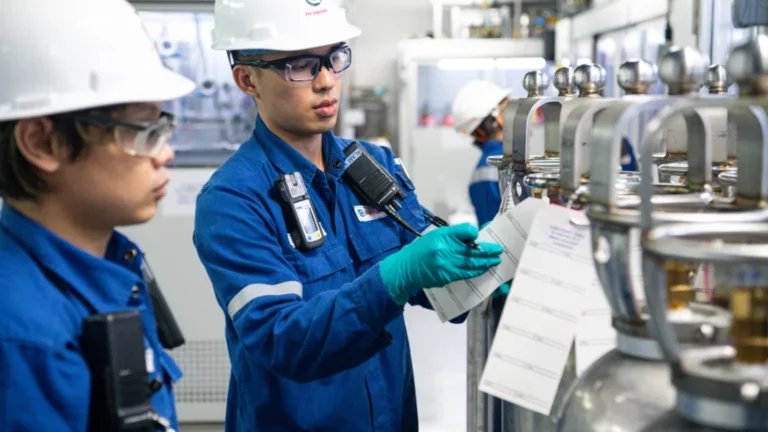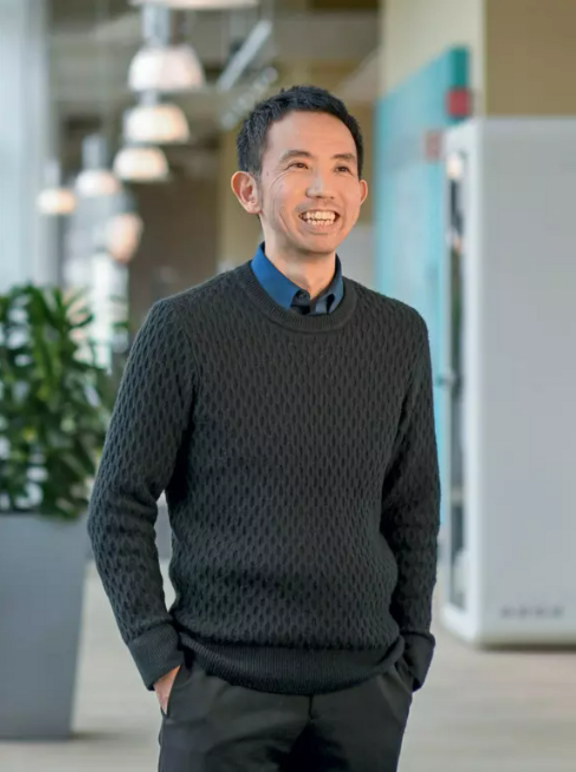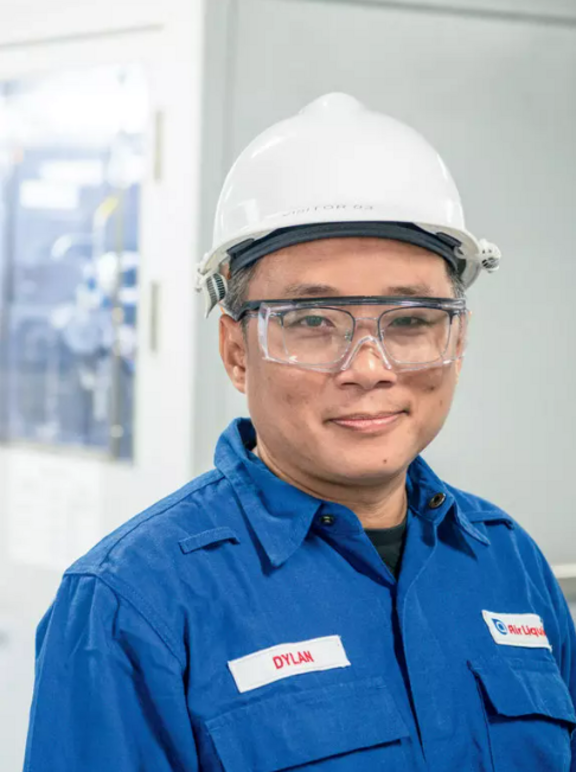Advanced materials for sustainable electronics

“When people hear ‘advanced materials,’” says Jiro Yokota, “they often think that we are dealing with simple, plug-and-play solutions: ‘Just exchange material A for material B to save X amount of money in production,’” says the Technology Program Manager at Air Liquide Advanced Materials. “But what we do is far more complex – and requires a closer relationship with the customer and a thorough understanding of their production processes.”
We have come to one of Air Liquide’s longest-standing customers, Micron, to get a feel for what Jiro means. For 30 years now, Air Liquide has been supplying the US-based provider of memory storage solutions with the ultra-pure gases required in microchip production. During this time, the electronics industry had expanded rapidly as computers and then smartphones became standard consumer goods, while at the same time cars and household appliances acquired more complex electronic components capable of faster performance and more processing power. All while reducing financial costs and environmental footprint.

““Our enScribe™ products are designed to reduce the global warming potential typically associated with most contemporary gases used in etch processes.”
”
Jiro Yokota
Technology Program Manager, Advanced Materials, Air Liquide
We are here in Singapore at the Air Liquide Advanced Materials center built for Micron. Located on the western shore of the island state, a couple of miles away from its gleaming center, the facility is an ultra-modern production plant – “the first of its kind,” explains Dylan Low of Air Liquide Singapore.
He picks us up at the gates alongside Helena Seiver, Vice President, Strategic Account Management for Micron at Air Liquide, and while we don protective goggles, helmets and overalls for our tour of the plant cleanrooms, she explains her role as “providing one Air Liquide service to one Micron.” This means ensuring that Air Liquide deploys its international reach to support its partner as it, too, expands globally. In this case, the Group opened one of its largest electronics advanced materials production facilities alongside Micron in Singapore.

““For 30 years, Air Liquide and Micron have grown together. The Singapore Advanced Materials Center, their most recent joint achievement, is the first production plant of its kind.”
”
Dylan Low
Strategic Business Unit Director, Air Liquide Singapore
This strategy of regionalizing supply chains makes them more robust and responsive. With covid-19 lockdowns in place during the construction of Air Liquide’s Advanced Materials center in Singapore, the importance of regional synergies became even more salient. About the partnership with Air Liquide, Jenny Tan, Frontend Global Materials Operations Director at Micron, comments, “Micron and Air Liquide have been successfully collaborating for the last 30 years on various projects that have contributed to Micron’s production efficiency, supply chain resiliency and sustainability efforts. We are excited to continue our long partnership with Air Liquide in the years to come.”
Jiro takes this as his cue to talk us through how Air Liquide’s enScribe™ etching molecules help the company’s electronics customers make marked emissions reductions in their manufacturing processes. “Our materials replace high global warming potential etching gases, which have more potent greenhouse gas emissions than carbon dioxide,” he says. As such, whenever a customer adopts one of these molecules, it has the potential to reduce the entire sector’s emissions. The use of just one of these molecules by some customers has already helped reduce the industry's overall emissions by almost 1%. “Also,” he adds, “each chip that leaves a fab has the potential to further reduce emissions down the line – by making a computer or even a car more efficient.”
Advanced materials indeed!
Micron and Air Liquide have been successfully collaborating for the last 30 years on various projects that have contributed to Micron’s production efficiency, supply chain resiliency and sustainability efforts. We are excited to continue our long partnership with Air Liquide in the years to come.”
Jenny Tan, Frontend Global Materials Operations Director, Micron